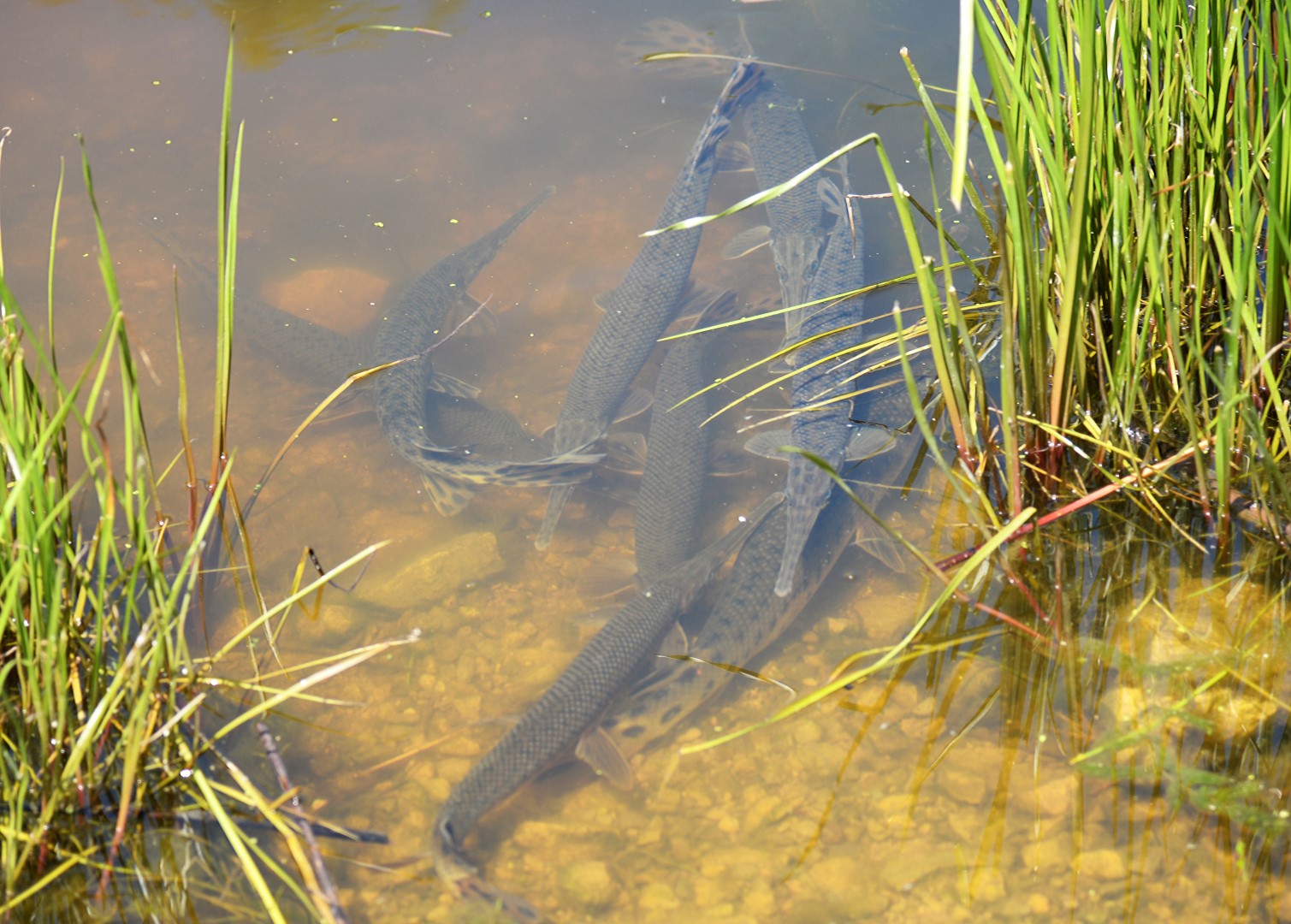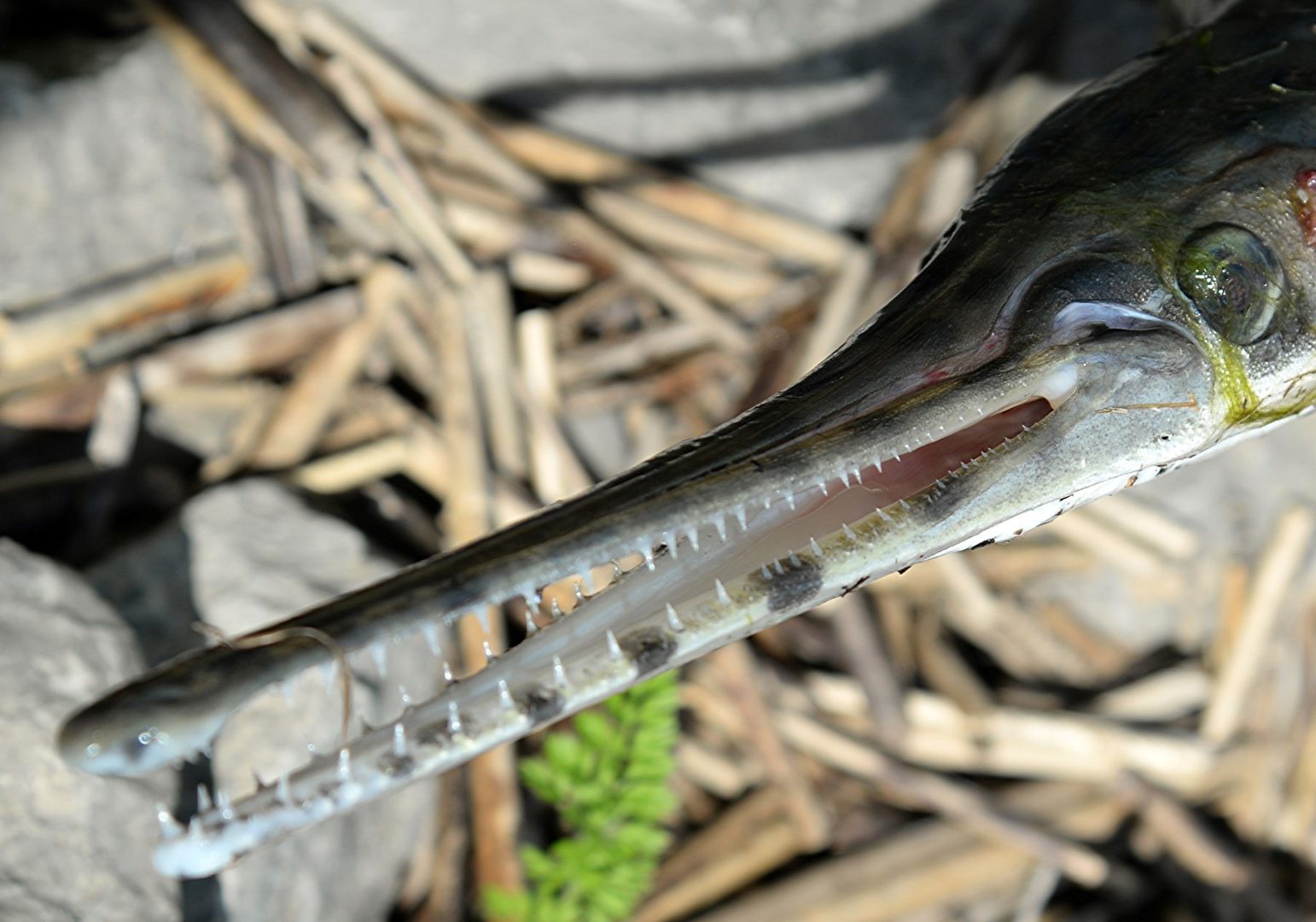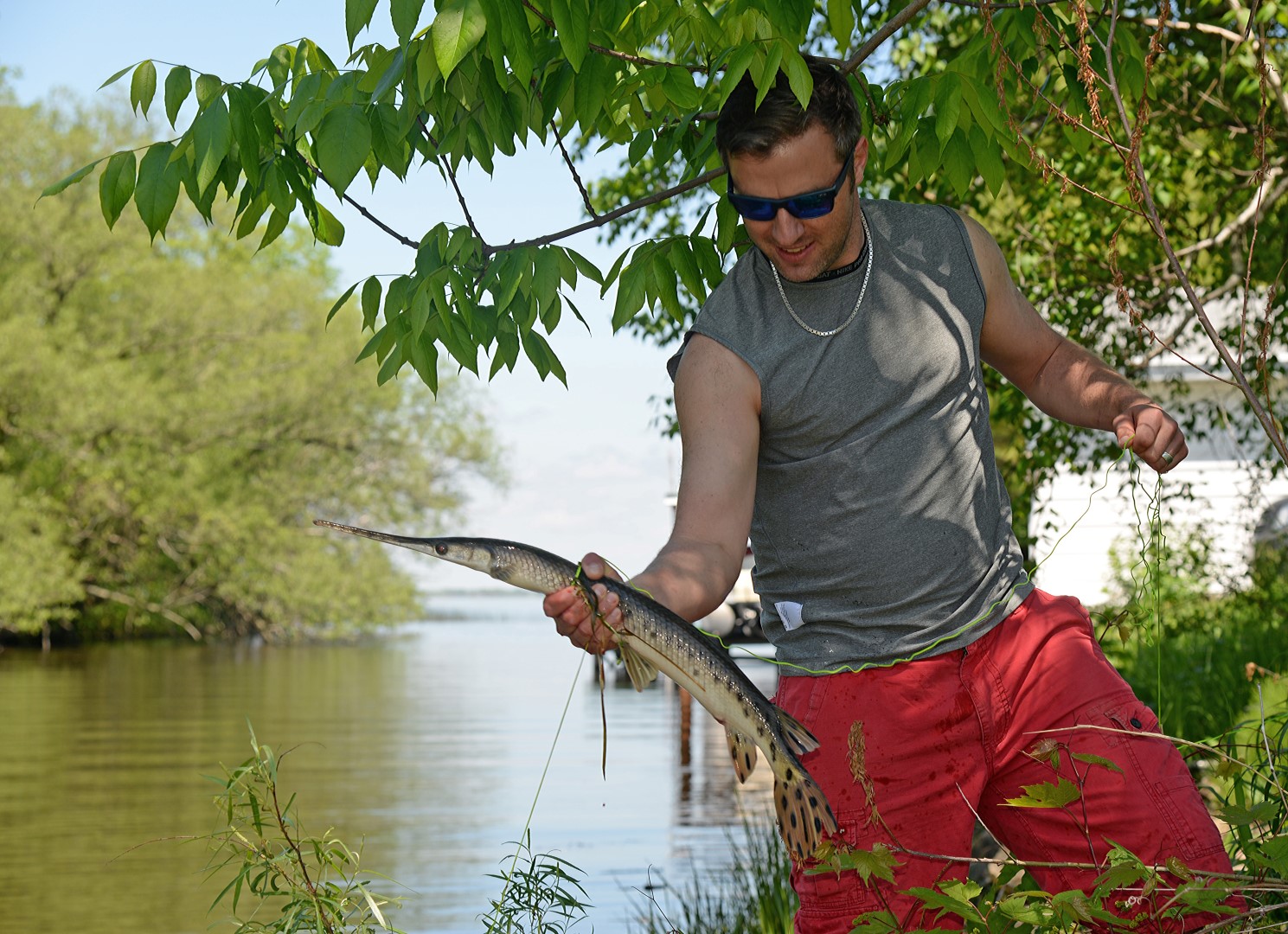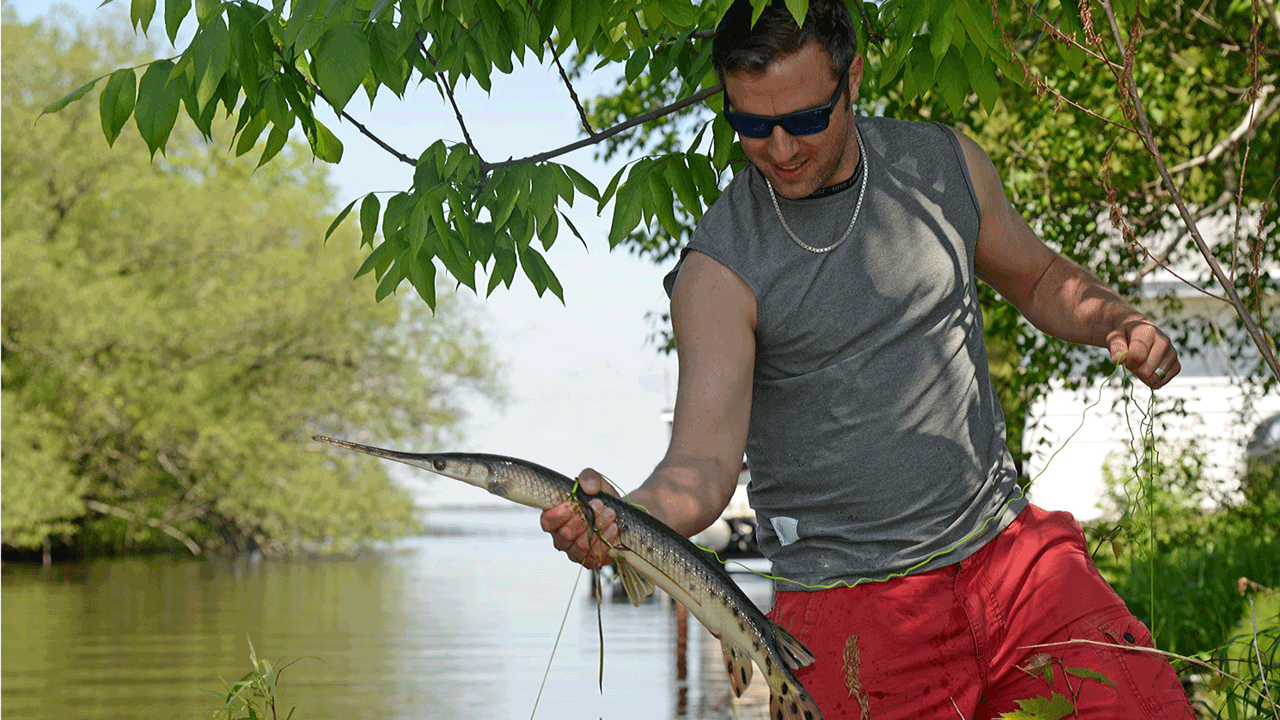Pity the gar, a homely fish that looks like a needle-nose pliers with fins.
Gar are so ugly their reputation suffers whenever they swim within view of piers, shorelines or anchored boats. People see gar and make two assumptions: they taste awful and they’re up to no good. That’s why this prehistoric predator has long been classified as a “rough fish,” even though few people have eaten one and even fewer report them to the authorities.
Despite the bad rap, objective scientists keeps coming to the gar’s defense. In his 1982 cookbook, “A Fine Kettle of Fish,” the late Vern Hacker – a fisheries biologist with the Department of Natural Resources – gave gar stellar reviews: “The flesh of large gar is in great demand in some Southern states, commanding prices higher than T-bone steaks. The meat is boneless, white and reputed to have a flavor between fish and pork chops.”

A pod of longnose gar spawn in the shallows of Lake Poygan.
Take note, however, that the gar’s tiny dark-green eggs are poisonous to man, beast and politicians alike, so don’t get clever with their caviar if you arrow, spear or catch a gar while they spawn in shallows about this time each year.
This is also when gar are most visible to casual observers. When spawning, gar move along weedy shorelines in pods, usually with a large female surrounded by throngs of thrashing and prodding smaller males helping her dump her eggs onto the weeds.
And just so we’re clear, Wisconsin is home to two gar species, the longnose and shortnose, and they’re both native fish. The longnose gar is the larger of the two species. The state record longnose caught on hook-and-line measured 52.5 inches and weighed 21 pounds, 4 ounces. It was caught in June 1990 on the Wisconsin River in Richland County. The state record shortnose gar measured 31.75 inches and weighed 4 pounds, 5 ounces. It was caught on the Fox River in Outagamie County in August 2015.
The DNR also keeps spearing and bowfishing records. In that category, the state-record longnose gar measured 52 inches; weighed 18 pounds, 7 ounces; and was taken in May 2016 on the Mississippi River in Grant County. The record shortnose gar for spearing/bowfishing measured 28.25 inches; weighed 4 pounds, 10 ounces; and was taken in June 2012 on Lake Winnebago in Winnebago County.
To tell the shortnose from longnose gar, study their snout. If it’s skinny and at least twice the length of its head, it’s a longnose gar. Shortnose gar have a slightly broader snout that’s about as long as their head. If you’re still unsure of the identity, look for large black spots on the body and fins. Longnose gar have them; shortnose gar don’t.

Longnose gar.
But talk about menacing. Those long, bony beaks are rock-hard and lined with sharp, pointy teeth that help gar rob bait from fishing lines while rarely getting hooked. In fact, that might be another reason gar are so widely disliked.
Another cool thing about gar: They’re living fossils that trace their origins to much tougher eons. You see that in their scales, which are shaped like diamonds and interlock into armor plating that covers their entire body. Plus, gar can live a long time when removed from water because they can extract oxygen from air they gulp. Most fish can only get oxygen by moving water over their gills. While spawning, gar also break the surface to gulp air.
Even though spearers and bowfishermen enjoy stalking gar, biologists like Kendal Kamke – the DNR’s regional fisheries supervisor in Oshkosh – gently suggest they leave gar alone. “This is a fish where you can follow the tenet, ‘The enemy of my enemy is my friend,’” Kamke said. “Gar are one of the few fish that eat little carp, and they’re pretty good at it. If you really don’t like carp, you should like gar.
“You don’t help anything by killing gar if you’re not going to eat it,” Kamke continued. “It won’t result in more walleyes. A lot of bowfishing tournaments take our advice and focus on carp, sheepshead and quillback, but most people still think gar are bad. Yes, gar mostly eat other fish, but they’re also pretty good at controlling panfish populations that would otherwise get stunted.”

Anglers and bowfishermen should consider not killing gar. These native fish feed heavily on young carp.
Even though most anglers don’t catch gar with traditional fishing tackle, some fishermen use special rigs of soft nylon braids that look like miniature mops. They cast the rig and fish it slowly like a worm, using a stop-and-go retrieve. When gar hit, their toothy snouts get tangled in the nylon strands. Rather than set the hook, the angler applies steady pressure while reeling them in. But gar aren’t pushovers. They battle every inch of the way.
Even with all those attributes, however, gar probably aren’t destined for newfound popularity. And it’s not just their looks and undeserved rough-fish label. Kamke said gar populations never get large enough to draw much attention.
“They’re one of those fish that just kind of exists without being noticed much, except when they’re spawning,” Kamke said. “We don’t go out and do population estimates on them, and few people go looking for them. I’d say most people are content not seeing them.”
